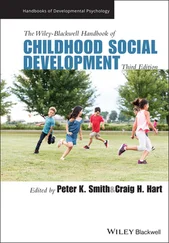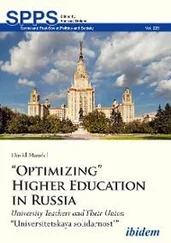Orr then moves on to propose assignments for campuses. His first recommendation is to engage in a campus‐wide dialogue on education and the means of education. As guiding questions, Orr presents the following:
Does four years here make your graduates better planetary citizens or does it make them, in Wendell Berry's words, "itinerant professional vandals"? Does this college contribute to the development of a sustainable regional economy or, in the name of efficiency, to the processes of destruction?
(Orr 1991, p. 6)
His second suggestion is to examine resource flows on campus (food, energy, water, materials, and waste) and understand the environmental damages caused by it. He recommends that campuses start education by teaching their faculty and students to seek real‐world solutions to real‐world issues in their immediate environments. Orr's third recommendation is that campuses reexamine their endowments to find out if they invest in companies that act responsibly to cater to the needs of the world. On a final note, Orr proposes setting a goal of ecological literacy in students and provides a list of guiding themes or topics.
What is noteworthy is that Orr's idea of education resonates with the rationale behind ESD and SDGs. From the UNESCO point of view, HEIs play a key role in ESD‐GAP Priority Action Areas. Higher education constitutes the learning environment for all educational professionals and providing ESD literacy to professionals is of utmost importance. Leaders of HEIs hold key positions in contributing to an equitable and ecologically sound future by establishing sustainable development as a central academic and organizational focus. This could be further facilitated by: (i) research initiatives in universities and higher education networks, (ii) providing advice and guidance on strengthening national education systems, and (iii) capacity building for sustainable development across different sectors. UNESCO believes in the contribution of HEIs in providing expertise and support to local ESD initiatives. Universities have the potential to combine the knowledge and experience at the local level with information housed at higher levels. Using evidence‐based data, and problem‐based scientific research, HEIs can strengthen the interface between research findings and decision‐making (Heiss 2021).
During the past 10 years, HEIs have made significant efforts to address sustainability in campus operations. This includes the development and sharing of tools and reporting frameworks. Universities have adopted new sustainable development related and specialized programs and courses. Networks of HEIs have emerged building capacity and promoting sustainable development teaching. Many HEIs have become pioneers in adopting a whole‐institution approach to ESD. Heiss (2021) also identifies a number of challenges to ESD, one of them being that implementing commitments to sustainable development requires coordinated change at multiple levels – in governance, planning, academic programs, facility management, and financial systems. Another challenge is the level of innovative thinking and involvement ESD demands in staff development and across institutions in order to transform curricula and pedagogy.
1.3 Promoting Sustainability in Higher Education
The need for a more holistic approach to ESD in the curriculum emerged with Hopkins and McKeown's (2005, p. 13) emphasis on it in the UN Decade of Education for Sustainable Development (DESD) of 2005–2014. Following this, HEIs adopted holistic approaches that were translated into practice with a focus on knowledge, methods, and curriculum change. In terms of a formal ESD curriculum, it takes the form of a new ESD subject and/or the development of ESD as a cross‐curriculum topic. However, a more effective holistic approach is that of curriculum and institutional change contributing to the overall reorientation of education toward sustainability (2005, p. 13).
From the recent past, “Rio+20 People's Sustainability Treaty on Higher Education” is a significant international effort that was jointly developed by over 30 HEIs and networks under the special guidance of the International Association of Universities and the UN University – Institute of Advanced Studies of Sustainability. This treaty promotes eight Evolving Principles (Rio+20 People's Sustainability Treaty on Higher Education (n.d.), p. 4), emphasizing a holistic and transformative perspective for sustainable higher education: (i) to be transformative, higher education must transform itself; (ii) efforts across the higher education system must be aligned; (iii) partnership underpins progress; (iv) sustainable development is an institutional and sector‐wide learning process; (v) facilitating access to the underprivileged; (vi) inter and trans‐disciplinary learning and action; (vii) redefining the notion of quality higher education; (viii) sustainable development as a whole‐of‐institution commitment (Rio+20 People's Sustainability Treaty on Higher Education (n.d.), pp. 4–5).
HEIs worldwide employ institutional sustainability provisions in the form of “sustainability policy,” “sustainability plan,” or “sustainability statement.” What is observable is their lack of shared understanding of what constitutes ESD and the lack of a shared approach to ESD. This brings us back to the question of institutional provisions and the need to find a common ground in ESD.
Harvard University's 2015–2020 Sustainability Plan is “the roadmap for building and operating a healthier, more sustainable campus community” that centers around five core topics: (i) Emissions and Energy, (ii) Campus Operations, (iii) Nature and Ecosystems, (iv) Health and Well‐Being, and (v) Culture and Learning. It is a resolute document that governs key strategic interventions by Harvard in sustainability issues on‐ and off‐campus. What is noteworthy is Harvard's sustainability commitment to employing innovations and solutions developed within the university with the active engagement of its students and staff (Harvard University Sustainability Plan).
Under Emission and Energy, Harvard commits to reduce university‐wide greenhouse gas emissions and energy emissions. Campus Operations aim to design and maintain the built environment and develop cutting‐edge programs to enhance the health, productivity, and quality of life of students and staff. This includes efforts to maintain Green Building Standards, reduce wastewater, maintaining green‐cleaning and sustainable IT standards, reducing campus fleet and shuttle emissions, and developing standards for climate preparedness and resilience. Through landscaping operations, campus design, and conservation and education, Harvard aims to commit to Nature and Ecosystems. By protecting and enhancing the ecosystems and green spaces in the university, Harvard also sets a precedent in enhancing regional biodiversity and personal well‐being. Moreover, Harvard's Health and Well‐Being commitment aims to conserve resources, reduce pollution and enhance personal well‐being through reducing the university community's exposure to toxic chemicals and developing sustainable and healthful food standards. Similarly, under the core topic of Culture and Learning, Harvard employs research and teaching, governance, external partnerships, communications, and community action to combat sustainability challenges (Harvard University Sustainability Plan n.d.). These five core topics show a close affinity with Dover's understanding of sustainability as an intricately connected range of issues covering “resource depletion and degradation,” “pollution and wastes,” “fundamental ecological life support services,” and “society and the human condition” with a number of constituent issues (2005, p. 9). Similarly, the University of Michigan's sustainability plan is centered around six goals that bear a close resemblance to Dover's understanding of sustainability: climate action through greenhouse gas reduction; fuel efficiency; waste reduction; sustainable foods; healthy environments and protecting the Huron river; and community engagement (Sustainability Goals 2021).
Читать дальше












